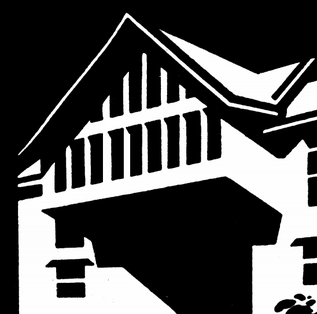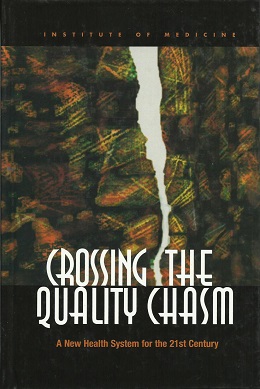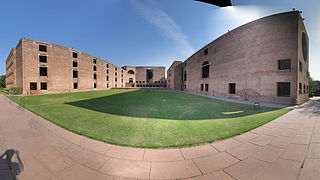Related Research Articles

Industrial design is a process of design applied to physical products that are to be manufactured by mass production. It is the creative act of determining and defining a product's form and features, which takes place in advance of the manufacture or production of the product. It consists purely of repeated, often automated, replication, while craft-based design is a process or approach in which the form of the product is determined by the product's creator largely concurrent with the act of its production.
The Bachelor of Business Administration (BBA), Bachelor of Science in Business Administration, or Bachelor of Arts in Business Administration is a bachelor's degree in business administration awarded by colleges and universities after completion of four years and typically 120 credits of undergraduate study in the fundamentals of business administration, usually including advanced courses in business analytics, business communication, corporate finance, financial accounting, macroeconomics, management, management accounting, marketing, microeconomics, strategic management, supply chain management, and other key academic subjects associated with the academic discipline of business management.

A lota is a small, spouted round vessel used in the Indian subcontinent since at least the 2nd millennium BC. The copper lota is used in religious ceremoies such as in a yagna ritual during puja prayers, weddings and other sacred ceremonies. It is also used for serving water and liquor. According to the ancient Indian/Hindu-origin traditional medicine system of ayurveda, drinking water stored in the copper lota has health and nutritional benefits.
The National Institutes of Design (NIDs) are a group of autonomous public design universities in India, with the primary institute, founded in 1961, in Ahmedabad, with extension campuses in Gandhinagar and Bengaluru. The other NIDs are located in the cities of Kurukshetra, Vijayawada, Jorhat and Bhopal. The NIDs function autonomously under the Department for Promotion of Industry and Internal Trade (DPIIT), Ministry of Commerce and Industry, Government of India. The NIDs are recognised by the Department of Scientific and Industrial Research of the government's Ministry of Science and Technology as a scientific and industrial research organisation. The universities are accorded Institutes of National Importance under the National Institute of Design Act, 2014.
The Earth Institute is a research institute at Columbia University that was established in 1995. Its stated mission is to address complex issues facing the planet and its inhabitants, with a focus on sustainable development. With an interdisciplinary approach, this includes research in climate change, geology, global health, economics, management, agriculture, ecosystems, urbanization, energy, hazards, and water. The Earth Institute's activities are guided by the idea that science and technological tools that already exist could be applied to greatly improve conditions for the world's poor, while preserving the natural systems that support life on Earth.

Design management is a field of inquiry that uses design, strategy, project management and supply chain techniques to control a creative process, support a culture of creativity, and build a structure and organization for design. The objective of design management is to develop and maintain an efficient business environment in which an organization can achieve its strategic and mission goals through design. Design management is a comprehensive activity at all levels of business, from the discovery phase to the execution phase. "Simply put, design management is the business side of design. Design management encompasses the ongoing processes, business decisions, and strategies that enable innovation and create effectively-designed products, services, communications, environments, and brands that enhance our quality of life and provide organizational success." The discipline of design management overlaps with marketing management, operations management, and strategic management.

The Centre for Development Studies (CDS), Thiruvananthapuram, Kerala, India is a premier Social Science research institute. It is also a higher education institution providing M.A. course in applied economics and PhD course in economics. The institute is internationally reputed for being a centre for advanced learning in economics. Its main objective is to promote research, teaching and training in disciplines relevant to development.

Bernice Alexandra Kaiser Eames was an American artist and designer who worked in a variety of media.

Charles Eames and Ray Eames were an American married couple of industrial designers who made significant historical contributions to the development of modern architecture and furniture through the work of the Eames Office. They also worked in the fields of industrial and graphic design, fine art, and film. Charles was the public face of the Eames Office, but Ray and Charles worked together as creative partners and employed a diverse creative staff. Among their most recognized designs is the Eames Lounge Chair and the Eames Dining Chair.

Dharmsinh Desai University (DDU) formerly known as Dharmsinh Desai Institute of Technology (DDIT) is a state funded institution in Nadiad, Gujarat, India and was founded on 2 January 1968.

Crossing the Quality Chasm: A New Health System for the 21st Century is a report on health care quality in the United States published by the Institute of Medicine (IOM) on March 1, 2001. A follow-up to the frequently cited 1999 IOM patient safety report To Err Is Human: Building a Safer Health System, Crossing the Quality Chasm advocates for a fundamental redesign of the U.S. health care system.
The National Institute of Bank Management is an autonomous institute located in Pune, India. It is an autonomous, apex institution for research, training, education and consultancy in bank management.
The IIT belongs to the School of Engineering (ICAI) of Comillas Pontifical University in Madrid, Spain. It is a non-profit Institute created in 1984 with the aim of promoting research and developing postgraduate programs in diverse technological fields through participation in projects funded by the industry and administrations.

Gujarat is a state situated in the western part of India and shares its northwestern boundary with Pakistan. Rajasthan, Madhya Pradesh and Maharashtra are the neighboring states of Gujarat. Gandhinagar is the capital city of the state and Ahmedabad is its largest city and the main commercial hub of the region. Gujarat houses a wide variety of industries and is considered one among the best industrialized states of the nation. Gujarat is also home to some of the prestigious educational institutes of the nation.
The National Institute of Design (NID) is a public design university in Paldi, Ahmedabad, with extension campuses in Gandhinagar and Bengaluru. Regarded as one of the foremost design schools in Asia as surveyed by Bloomberg Businessweek in 2009 and on Ranker, it is ranked 51-100 among the top art and design institutes in the world as of 2022 by QS. The university, along with the other NIDs across India, functions as an autonomous institute under the Department for Promotion of Industry and Internal Trade, Ministry of Commerce and Industry, Government of India. NID has been accorded an Institute of National Importance under the National Institute of Design Act, 2014.

The Bureau of Police Research and Development (BPR&D), was set up on 28 August 1970 in furtherance of the objective of the Government of India for the modernisation of police forces. It has evolved as a multifaceted, consultancy organisation. At present it has 4 divisions – Research, Development, Training and Correctional Administration.

The Research Foundation for Governance in India (RFGI) is a think tank based in Ahmedabad, India, with the aim to research, promote, and enact legal and political changes in Gujarat and across India. RFGI acts as a consultant to help implement government reforms. The Foundation researches issues for legal reform in law and governance. It also sponsors public events to raise awareness, especially among youth.

Central Leather Research Institute or CLRI is the world's largest leather research institute in terms of research papers and patents. The institute located in Chennai, Tamil Nadu was founded on 24 April 1948 as a constituent laboratory under the Council of Scientific and Industrial Research.

The Indian Diamond Institute (IDI) is a Government of India sponsored autonomous higher school of learning in the fields of diamonds, gems and jewellery in India. The Institute is located in Surat, Gujarat, India and is 263 km away from Mumbai. Indian Diamond Institute is an Authorised Assayer of Department of Customs, Government of India.

Gira Sarabhai was an Indian architect, designer, and a design pedagogue. She was born into the Sarabhai family and was the youngest of eight siblings. She is known for contributing to several industrial and educational projects in Gujarat. She was the representative of the Sarabhai Foundation, a public charitable trust. Gira, along with her brother Gautam Sarabhai were crucial in establishing and designing the academic curricula of National Institute of Design, Ahmedabad.
References
- ↑ Mathur, Saloni (2011-05-29). "Charles and Ray Eames in India". Art Journal Open. Retrieved 2021-03-16.
- ↑ National Institute of Design, Research & Publications (2013). 50 Years of The National Institute of Design 1961-2011. Ahmedabad: National Institute of Design. p. 11. ISBN 978-81-86199-71-8.
- ↑ "History & Background". National Institute of Design, India. Retrieved 2018-12-05.
- ↑ Ahmedabad, National Institute of Design (12 July 2018). "LOTA". Youtube.
